Yellow vest protests 'economic catastrophe' for France
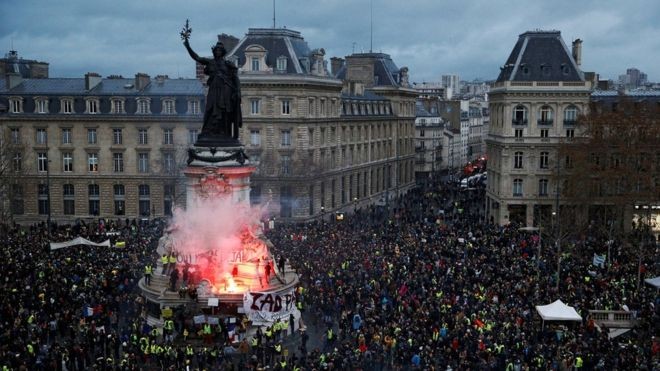
St. Louis Fed President Bullard says the central bank could delay an anticipated December rate hike. He cites the inversion of the yield curve earlier this week as reason for caution. An inverted yield curve is often heralded as a sign of economic recession, though the time between inversion and GDP downturn has varied widely.
France has seen four consecutive weekends of demonstrations against fuel tax rises, high living costs, and other issues.
About 125,000 protesters took to the streets on Saturday, with more than 1,700 people arrested.
Several tourist sites, including the Eiffel Tower and Louvre Museum, are closed this weekend.
Finance Minister Bruno Le Maire called the situation "a crisis" for both society and democracy.
"It's a catastrophe for commerce, it's a catastrophe for our economy," he said during a visit to shops in Paris that had been damaged during the protests.
The capital was particularly badly hit, with windows smashed, cars burned, and shops looted, as 10,000 people took part in demonstrations.
- In pictures: France's latest protests
- Why the 'yellow vests' won't stop protests
- French students 'humiliated by police'
"There was much more damage yesterday than a week ago" because Saturday's protests were more dispersed, deputy mayor Emmanuel Gregoire told local radio.
However, he added that there had been fewer injuries compared with last week.
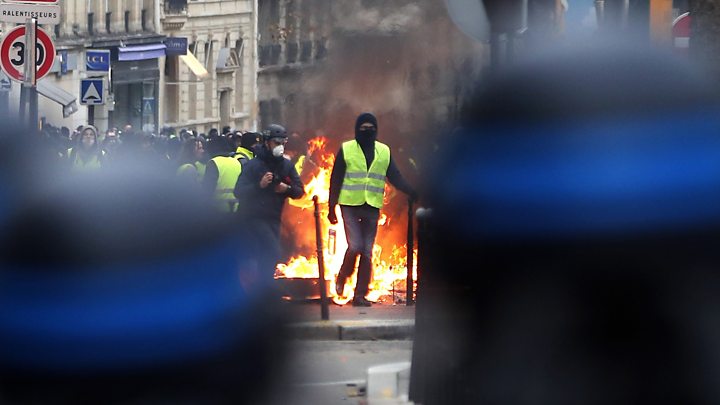
Meanwhile Foreign Minister Jean-Yves Le Drian responded angrily to US President Donald Trump, who on Saturday in tweets appeared to suggest the Paris Climate Agreement was the reason for the unrest.
"I say this to Donald Trump and the French president says it too: leave our nation be," Mr Le Drian said.
President Emmanuel Macron - who many protesters want to stand down - will address the nation in the coming days.
How bad is the economic damage?
It is too early to calculate the full economic cost - but it's clear the damage is severe.
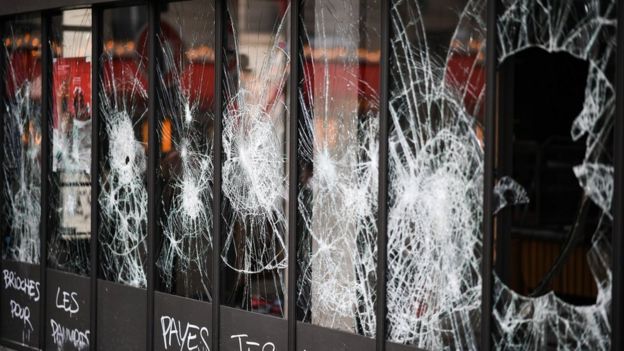 Image copyrightGETTY IMAGES
Image copyrightGETTY IMAGESLe Parisien newspaper reported that in the capital about 50 vehicles had been burnt and dozens of businesses vandalised, with some of them looted.
On Friday, the French retail federation told Reuters news agency that retailers had lost about 1bn euros ($1.1bn; £900m) since the protests first began on 17 November.
Mr Le Maire said last week, before the most recent protests, that the restaurant trade had declined by between 20% and 50%.
Meanwhile, the authorities in Paris say that riots have caused millions of pounds of damage.
There are concerns that the protests could lead to a drop in tourism. Paris was visited by a record number of tourists in 2017 - more than 40 million, the Paris Tourism Office said last month.
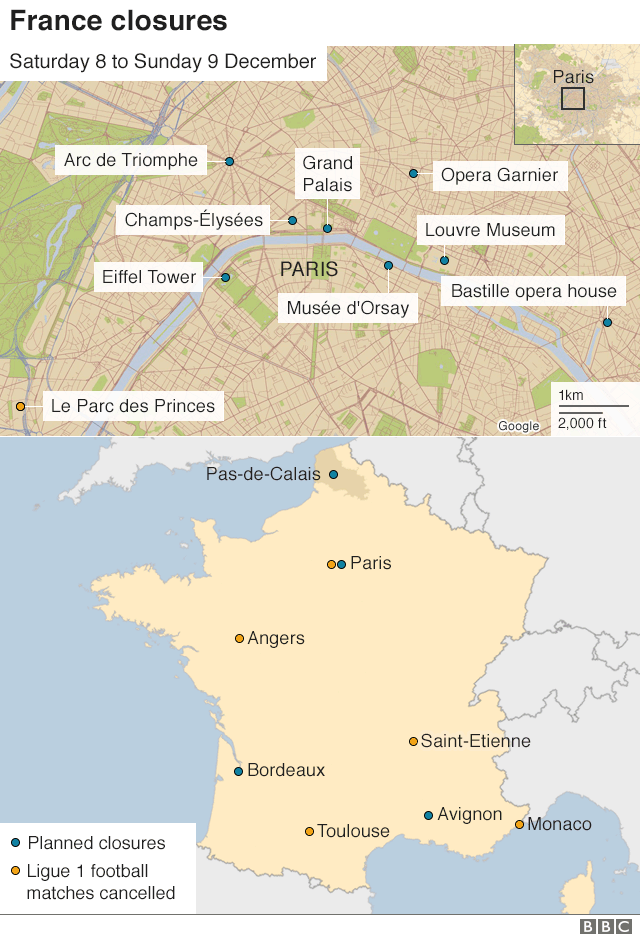

What is the yellow vest movement?
The movement began as a protest against a rise in duties on diesel, which is widely used by French motorists and has long been less heavily taxed than other types of fuel.
Diesel prices have risen by about 23% over the past 12 months - and Mr Macron's decision to impose a tax increase of 6.5 cents on diesel and 2.9 cents on petrol from 1 January enraged protesters.
Mr Macron had blamed world oil prices for three-quarters of the price rise, but said higher taxes on fossil fuels were needed to fund renewable energy investments.
- Who are the 'gilets jaunes'?
- Will the environment be the true victim of France's riots?
- Who supports the protesters?
The rallies became known as the "yellow vest" or "gilets jaunes" movement because protesters took to the streets wearing the high-visibility yellow jackets that are required to be carried in every vehicle by French law.
The government has since agreed to scrap the fuel tax increase and has frozen electricity and gas prices for 2019.
But protests have also erupted over other issues, including calls for higher wages, lower taxes, better pensions and easier university entry requirements.
The movement's core aim, to highlight the economic frustration and political distrust of poorer working families, still has widespread support.
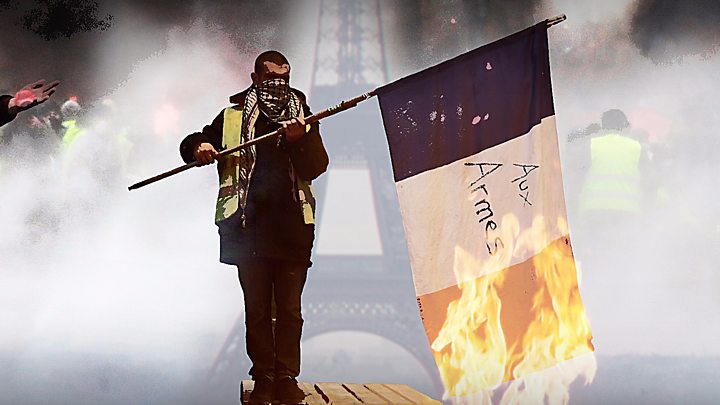
An opinion poll on Friday suggested a dip in support for the protests, but it still stood at 66%.
Meanwhile, President Macron's ratings have fallen to 23% amid the crisis, polls suggest.
Protest timeline
- 17 November: 282,000 protesters - one dead, 409 wounded - 73 in custody
- 24 November: 166,000 protesters - 84 wounded - 307 in custody
- 1 December: 136,000 protesters - 263 wounded - 630 in custody
- 8 December : 136,000 protesters - 118 wounded - 1,723 arreste